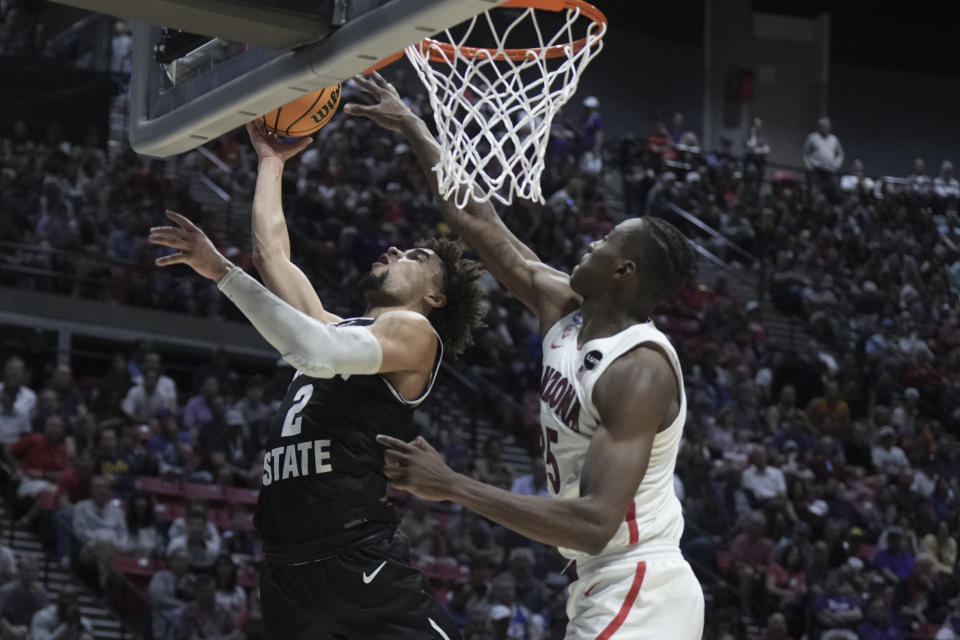Follow all of the picks, latest news and trades with our 2022 NBA draft tracker.
NEW YORK — Every NBA season there are a few players who completely outplay their draft stock and some who emerge as important pieces of a team two or three seasons in.
The Philadelphia 76ers selected Tyrese Maxey with the 21st pick in the 2020 NBA draft, and he solidified himself as a future piece to the franchise after a strong season and incredible playoff performance. In 2019, Grant Williams went 22nd to the Boston Celtics and is now the first one off the bench, logging 26 minutes per game during the playoffs. In the same draft class, the Golden State Warriors selected Jordan Poole with the 28th overall pick and in three short seasons, he’s turning into a third Splash Brother alongside Klay Thompson and Steph Curry.
The top four players in the 2022 draft haven’t changed all season with Jabari Smith, Chet Holmgren, Paolo Banchero and Jaden Ivey all expecting to hear their names called first. This is a deeper draft than years past, and there could be some players like Maxey, Williams and Poole sprinkled in the first and second rounds.
Here’s a look at seven players who are possible sleepers in the 2022 NBA draft.
Dalen Terry
Draft range: 15-35
Terry could have been a lottery pick in next year’s draft, but elected to stay in this draft class after receiving positive feedback at the NBA draft combine. He’s a 6-foot-7 perimeter player who has huge upside as a 3-and-D prospect. Terry averaged only eight points, 4.8 rebounds and four assists during his sophomore season at Arizona and was the third scoring option behind projected lottery pick Benn Mathurin and 7-foot-1 center Christian Koloko.
Terry’s decision to stay in this draft class had NBA teams scrambling to rewatch as much film as possible on him and get him in for a workout (he had roughly 10 workouts heading into draft week).
“I think I’m still being slept on a little bit,” Terry told Yahoo Sports. “I believe that if I would’ve come out next year, it wouldn’t even be a question. I’d be a top-10 pick. There’s a mystery of if I can shoot or not, and everyone just wants to see. So that’s why I had a lot of workouts the last few weeks.
“The draft process has been busy, but I’m having a lot of fun and it’s just a blessing to be going through this process up until now. Any team that believes in me is getting a player ready to work on Day 1, and I’m ready to showcase more of the player I am.”
Some scouts around the league think he could go as high as No. 14 to the Cleveland Cavaliers or No. 15 to the Charlotte Hornets. Terry could be that player who comes out of left field and shakes up the draft.
Bryce McGowens
Draft range: 25-35
McGowens chose to play at Nebraska alongside his brother, Trey, over Florida State, Oregon, Maryland, Clemson and Georgia. McGowens became the highest-ranked recruit in program history and its first five-star recruit. Now, he is the first one-and-done prospect to come from Nebraska’s basketball team.
McGowens is a skilled, lengthy combo guard at 6-foot-7 and has a bit of untapped potential at just 19 years old. NBA teams value guards with his size who can guard multiple positions on the perimeter and McGowens fits that mold. His shot selection needs to improve (shooting just 40% from the field and 27% from 3-point range), but that will come with time and development at the NBA level.
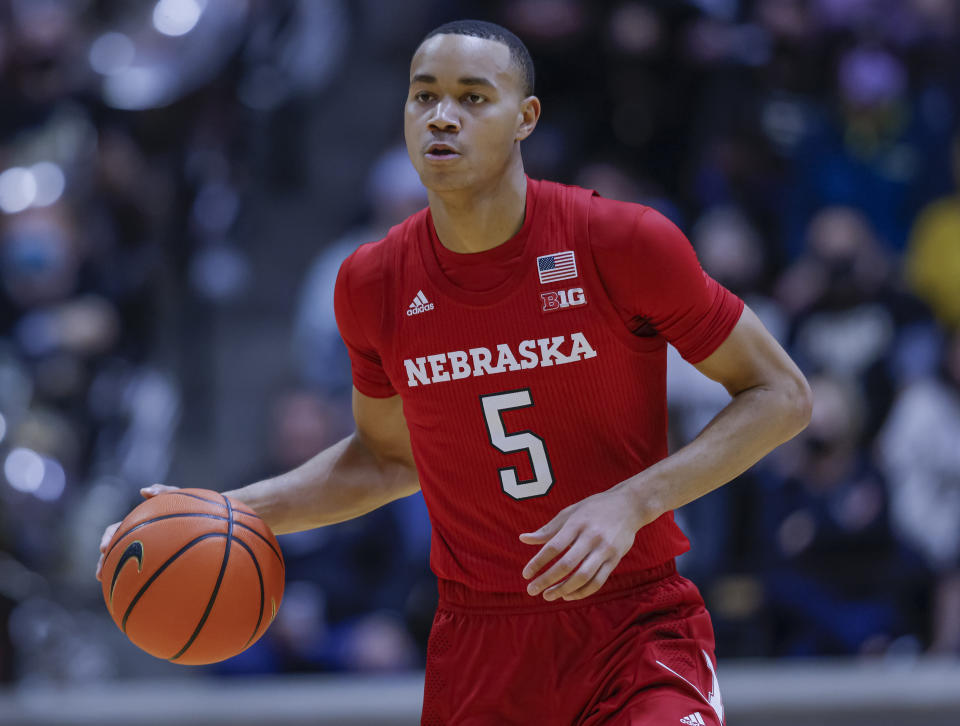

Peyton Watson
Draft range: 25-35
There are a lot of teams intrigued by Watson’s 6-foot-8 length at the shooting guard position. On paper, he didn’t do much with his one year at UCLA — 3.3 points, 2.9 rebounds in just 12.7 minutes on the court. UCLA was a bad fit from the start, returning almost its entire roster from the Final Four run the season before.
Watson also experienced a little bit of stunted development to his game during the COVID-19 pandemic. California had stricter guidelines and mandates, and Watson missed out on a lot of 5-on-5 competition his senior year in high school.
Watson projects as a long versatile guard who is one or two years away from a rotational spot on an NBA roster. He’s still young at 19 years old and has room to grow into his body at just over 200 pounds.
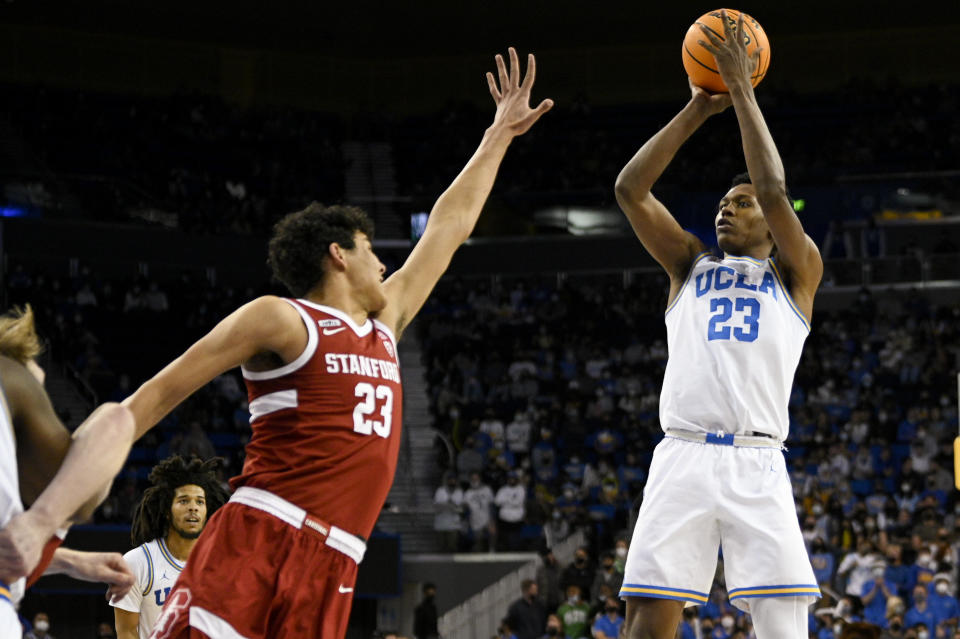

Caleb Houstan
Draft range: 20-35
If you saw Houstan work out at all during the pre-draft process, he looked like a completely different player than during his one season at Michigan. His 3-point jumper looks smooth and effortless (after shooting just 35.5% from deep during the season), and he’s added a bit of muscle mass to his frame. Steph Curry and Klay Thompson have proven time and again that it’s a shooters’ league and Houstan can shoot. Not only that, but he has tremendous size for a wing at 6-foot-8.
Cam Thomas was labeled a high-volume shooter coming out of LSU and many questioned how his game would translate to the league, but after being picked up at No. 27 by the Brooklyn Nets last year, he’s been able to showcase more of his offensive versatility.
Houstan’s only drawback is his lateral quickness and lack of explosiveness in the open court. He’s far from a defensive liability and his shooting might be enough to carry him to decent minutes in the league. A team will draft him on his upside alone and in the right situation, he could really flourish in a couple years.
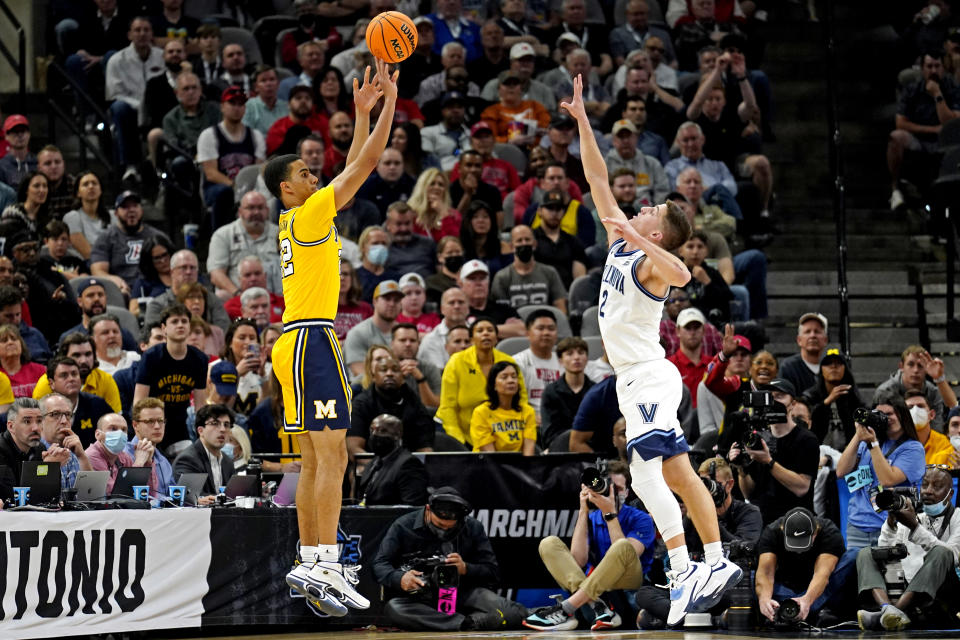

Patrick Baldwin Jr.
Draft range: 25-40
Baldwin Jr. was a top-10 player out of high school and chose to play for his father at the University of Wisconsin-Milwaukee over blue-blood programs. He has great size at 6-foot-9 and is a solid ball handler and outside shooter. Unfortunately, Baldwin Jr. played only 11 games this past season after suffering various minor injuries that kept him sidelined. He was one of the hardest prospects for NBA personnel to evaluate this season.
When Baldwin Jr. walks in the gym, he looks the part. Great size and length, similar to Kevin Durant, and when he’s healthy, he’s pretty impressive. The problem (and the reason why he’s dropping so much) is teams question whether or not he can stay healthy for an 82-game season. If he manages to get past these injuries that plagued his young career, Baldwin Jr. could be the steal of the draft.
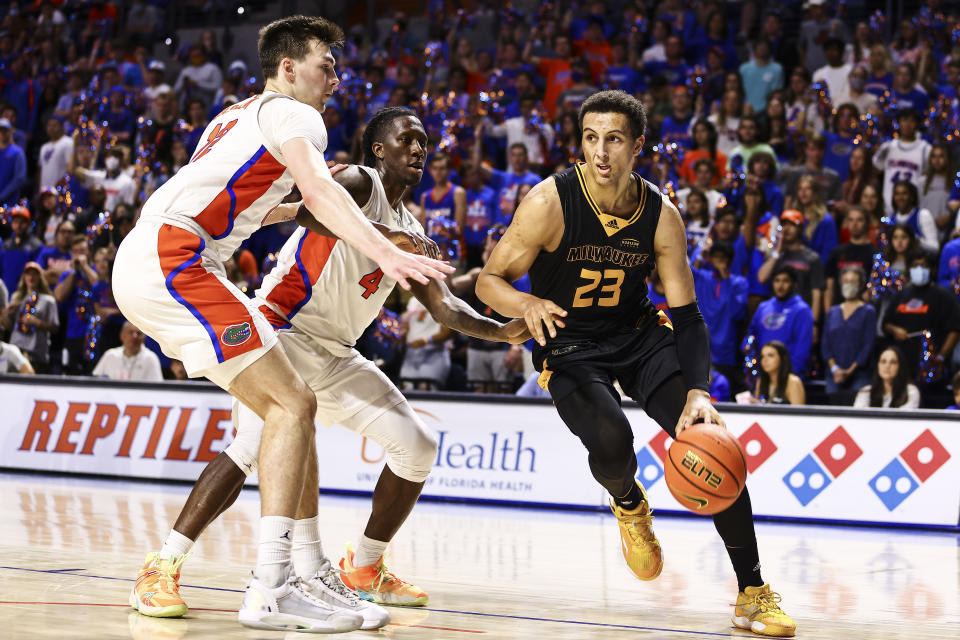

Michael Foster Jr.
Draft range: 30-50
Foster Jr. lost 14 pounds, added muscle mass and looked incredible at the combine. His body fat came in at 6.2% and he moved much better on the court than during the G League season.
Foster Jr. is more than just a rim-running big and has improved his footwork on the block. During the first eight games of the G League season, Foster Jr. averaged 13.9 points, 8.6 rebounds, 1.3 assists and 1.6 blocks. By the end of the season, Foster Jr. was averaging 16.4 points, 10.6 rebounds, three assists and 2.3 blocks in the last nine games. His outside jump shot is still an area needing improvement, but he has great size at 6-foot-8 and could end up being one of the biggest sleepers in the second round.


Christian Koloko
Draft range: 35-45
Koloko played three seasons at Arizona and capped off his junior year averaging 12.6 points, 7.3 rebounds and 2.8 blocks in 25 minutes per game. He measured off the charts at the combine, coming in at 7-foot-1 with a 7-foot-5 wingspan. Koloko’s presence in the lane is felt mostly on the defensive side of the ball and as an older player in the draft at 21, he can contribute right away to a team.
Even with his long frame, he does a surprisingly good job at keeping guards in front off the switch in pick-and-roll situations. If he gets picked by the right team, Koloko could be that secondary center, seeing early playing time and logging minutes with the starting unit.
